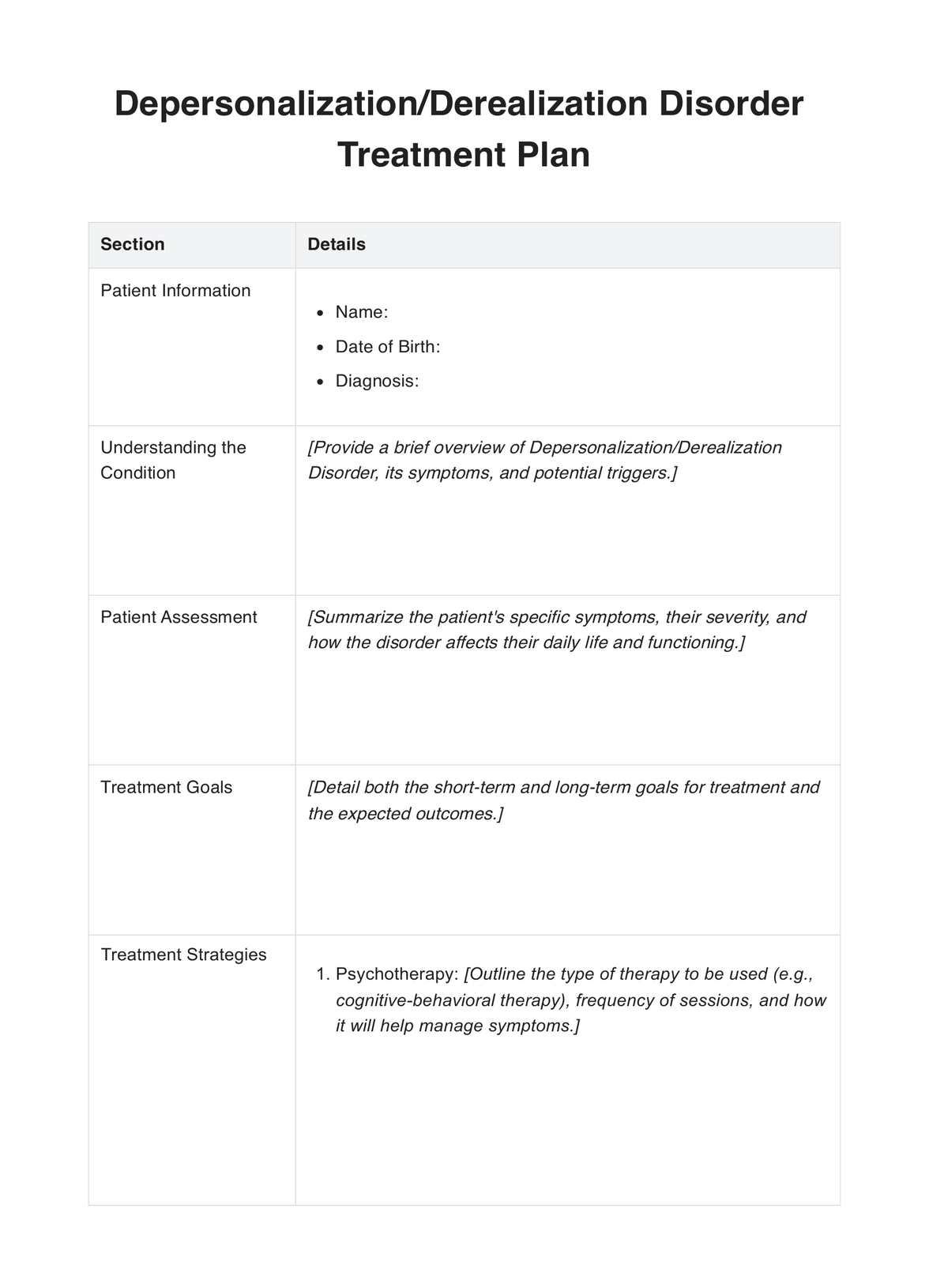Yes, a Depersonalization/Derealization Disorder Treatment Plan is effective. It provides a structured approach to managing the disorder, ensuring that treatment is personalized and adapted to the patient's specific needs. The plan incorporates evidence-based interventions, such as cognitive-behavioral therapy, which have been proven to be effective in managing DPDR symptoms.

Depersonalization/Derealization Disorder Treatment Plan
Explore a comprehensive Depersonalization/Derealization Disorder Treatment Plan. Learn about its effectiveness, who uses it, and when it's implemented.
Depersonalization/Derealization Disorder Treatment Plan Template
Commonly asked questions
A range of healthcare professionals use Depersonalization/Derealization Disorder Treatment Plans. This includes mental health professionals like psychiatrists, psychologists, therapists, and other healthcare providers involved in the patient's care, such as primary care physicians and psychiatric nurses.
A Depersonalization/Derealization Disorder Treatment Plan is implemented as soon as a definitive diagnosis has been made. It guides the course of treatment from the onset of care and is regularly updated based on the patient's progress and feedback.
EHR and practice management software
Get started for free
*No credit card required
Free
$0/usd
Unlimited clients
Telehealth
1GB of storage
Client portal text
Automated billing and online payments











